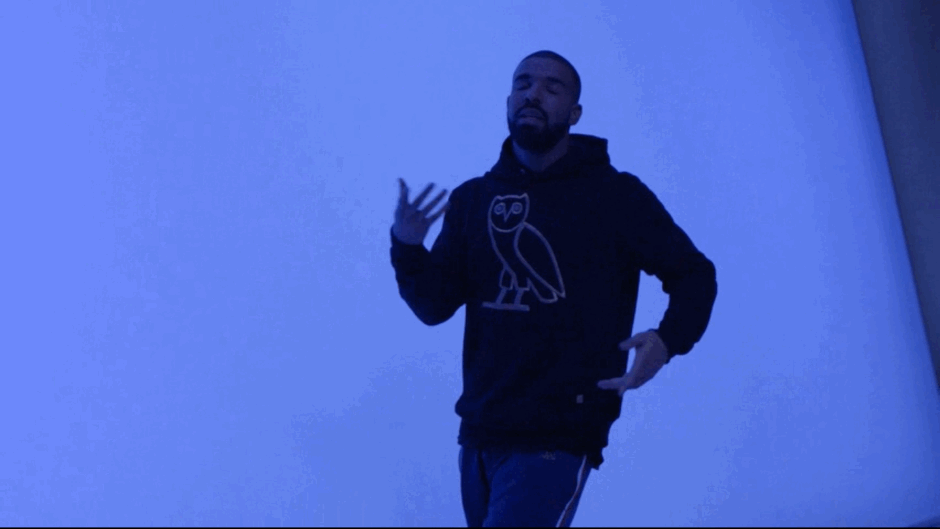Back in the day my father would play all of our music on cassette tapes, vinyl, discs, and the occasional “floppy disk.” When visiting our apartment one would be more than likely to trip over a stray Paul McCartney B-side or a badly scratched Carlos Santana album (that multi-Grammy winning one with the summer hit “Smooth” featuring Rob Thomas of Matchbox Twenty). And for a while, “the future of music,” meant finding out how to import these relics onto our shiny desktop computer. But these days all I do is listen to music on online streaming services – Spotify, Pandora, and now – relatively new to the fray – Apple Music.
In an effort to distinguish themselves from their competition, and perhaps bring back the iTunes/iPod glory days, they’ve enlisted the help of the world’s favorite Canadian rapper, the @ChampagnePapi himself, Drake. Their most recent music-video success “Hotline-Bling” brings Drake’s listeners back to those fond simple memories of when your lover would “call [you] on [your] cell phone.” This video was both an opportunity for Drake and Apple music to flaunt their product and get listeners to buy into Apple music before the initial three-month free trial deadline ends.
If you’ve been following Drake’s career, you might have noticed something of a trend in his latest releases. “Charged Up” and “Back to Back” refer to his Twitter argument with former friend and collaborator Meek Mill over the authenticity of Drake’s lyricism. Using the Apple Music platform to his advantage, Drake masterfully released these songs – back to back. The track “Back to Back” was released on the same day that the Toronto Blue Jays defeated the Philadelphia Phillies – underscoring this witty Toronto native’s victory over Philly’s Meek Mill. Not only was this a clever diss, but also was one that was only made possible because of the nature of Apple’s instant music streaming. “Charged Up,” is somehow even more heavy-handed in its Apple inspired imagery, using a charged iPhone battery icon as its album art – indicating Drake’s readiness to crush his competition. “Hotline Bling” is no exception to this motif that Drake has found himself entrenched in, as both the song and music video were made initially available and immediately popular as a result of Apple’s gargantuan marketing scheme.
It’s by no accident that your Facebook feed has been flooded with pictures, videos and .gifs of Drake dancing in a tight grey turtleneck. The share-ability of the Hotline-Bling music video is both a result of its sheer ridiculousness and actually en-point dancing. The video was choreographed by Trisha Scott, fellow Torontonian and mastermind behind the successful music videos of artists like Beyoncé and Rihanna. The sign of any good dance music video – in my eyes – is its ability to be played to any song, which Hotline Bling succeeds at doing. Take a moment to appreciate this prime example in which Scott incorporates familiar dance moves to a modern catchy beat.
//
Hotline Bling.WHO DID THIS ???.
Posted by Complex on Monday, October 19, 2015
But perhaps the thing that is so fascinating about the Hotline-Bling music video isn’t Drake’s meme-worthy dancing, but instead: the sheer volume of nostalgia packed into it. Again, the video is reminiscent of an era where dance videos were more prevalent and times more simple. The colorful backlit stage that a silhouetted Drake prances around catches the eye and is a clear reference to the early iPod advertisements.


The song itself, by referring to Drizzy’s old flame, the use of antiquated “cell phones,” and sampling of a sample originally taken from Koji Kondo’s “Star Theme” for Nintendo’s 1990 Super Mario World. Admittedly, there is not a lot to unpack from the lyrics themselves – “I know when that hotline bling / That can only mean one thing.” Drake exudes his usual confidence and bravado that his fans can’t get enough of, boldly sampling another rapper’s song to launch his own hit. The original sample was taken from DRAM’s “Cha Cha,” a song that expresses the rapper’s fervent desire to “Cha Cha in a Latin bar with a Dominican.” Champaign Papi, paying homage to DRAM, employs the Cha Cha as one of his featured dance moves in the Hotline Bling music video. In addition, the backup dancers are initially answering calls at what appears to be a foot fetish hotline, completing the circle of Drake’s and Apple Music’s imagery.
Given all this, what’s left to say? It isn’t uncommon for artists and record labels to carefully craft an image to help promote the sales of a project. What’s unique about this example is the way in which Apple has seamlessly introduced a new way to experience media. Drake’s team produces a track and accompanying video, Apple distributes it and at the same time advertises a product that everyone is already using. Although Drake was denied his #1 Billboard hit, it was a result of an antiquated system not yet ready to count the number of plays Apple received on the first week of the video’s release. The song is playing back to back on a good deal of people’s iPhones, iPods, Macbooks, iTouches, iPads, iWatches, etc. Will Apple Music successfully overcome its competitors, or has the game already been decided?